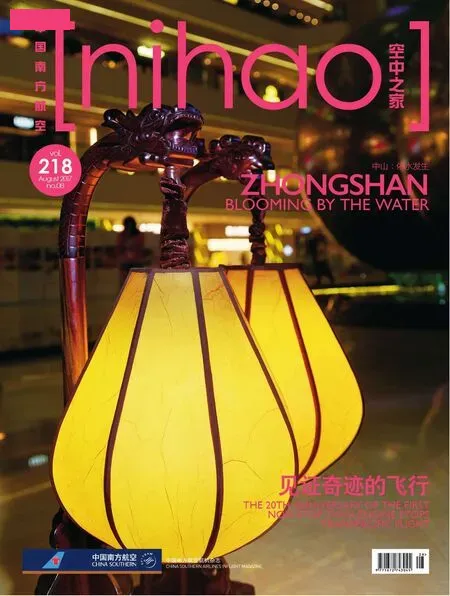MA YANSONG A NON-ORTHODOX CLASSICALIST
Text by Madeline Weng Translation by Madeline & Leo Timeline by Zhang Haolun Photos by Zeng Jian
MA YANSONG A NON-ORTHODOX CLASSICALIST
Text by Madeline Weng Translation by Madeline & Leo Timeline by Zhang Haolun Photos by Zeng Jian
There is a famous saying for architects in the loop: “There is no way for an architect to make a name in his 30's, unless his name is Ma Yansong.”At the age of merely 31, Ma Yansong has become the fi rst Chinese architect to have won an open bidding overseas. When the public began to make comparisons between him and master architects around the world, Ma rarely takes their doubts to heart. He knows too well that it takes time to become a master architect.


Ma looks gentle and relaxed. With his eyes habitually half-closed, he talks unhurriedly in a Beijing accent. This after-75s looks more like an elderly wise man, than someone in his prime. It is exactly beneath this calmness that countless “mad ideas” pop in and out, striving for a moment under the spotlight.
“I wonder, if aliens are about to rule the earth, what human buildings they are going to leave not destroyed?” Ma Yansong murmured out of the blue, while his eyes looked deep into space,“Perhaps the majority of the buildings will be ruined. When we look at the world in four dimensions, we realise that both 'the classic' and 'the modern' are merely an instant in the fl ow of history.”
Ma talks in a slow speed, choosing his words with care. He rarely responds to the questions that he has no interest in. However, to the matters that concern the future of cities, he has much to say: “I am actually a very anxious person. Every day I see plenty of ugliness and problems in Chinese cities. We harm nature and culture by building cities and villages in the same pattern. Most new districts in China look roughly the same! In 30 years, if we still keep on duplicating Chicago, New York, etc., our ancient culture will be lost. Although one would feel better if he/she turns a deaf ear to it, I feel responsible for bringing out potential solutions -because that is something an architect should do.”“Shanshui (literally means “mountain and water”) City”, Ma Yansong's solution to the future of cities, offers to solve the problems of overpopulation, functionality and urbanites' desire for nature. Meanwhile, his Utopian, East Asian living environment shall give its dwellers a sense of belonging.
Looking past, Ma realised that “Shanshui City” has long taken roots in him, ever since he was a child. The memories of boating in Shicha Lake and living in an old Hutong has been infused into his works.
Ma started to think critically about boxy western skyscrapers when he had just graduated from Yale University. Instead of a building that reminds people of money or power, Ma wanted to create something organic, natural and soft. His design for an open bidding in Mississauga, Canada was selected out of 92 competitors from 70 countries around the world. “The Absolute Towers” are also fondly dubbed as “the Marylyn Monroe Towers”, for their charming curves.
Beneath the glory, what fewer people know about is the efforts Ma and his team have made. They have lost more than a hundred competitions. Nevertheless, Ma does not think he is among the most hard-working ones: “Making great efforts is the most basic thing, and it does not guarantee the result. What's more important is the way you think and explore new ideas.”
Ma is the kind of person who easily sinks into deep thinking. He defi nes himself as an “non-orthodox classicalist”. He believes that it is exactly this kind of rebellious spirit that keeps pushing mankind and civilisation further.
Ever since he has started his career as an architect, Ma Yansong has never thought to change to any other profession. Architecture is something he has set his mind to do for the rest of his life.
“There is no end to this career. For me, the pursuit of a better design will never end. The actual building never really comes out as you expected, or when it's done, your ideas and preferences have already changed. You keep thinking that the next one might be better, and the same thing happens again.”Seeming to be complaining, Ma actually loves this process too much to have enough of it.
For him, every process of creating a new building is a journey further into his mind. And the more life experience and knowledge an architect has, the better his/her work becomes.“Therefore, I've never believed that a young person can be called a 'master architect'. In the end, it is usually the oldest ones that become the masters.” Like a kid, Ma Yansong laughed at his cold humour.

